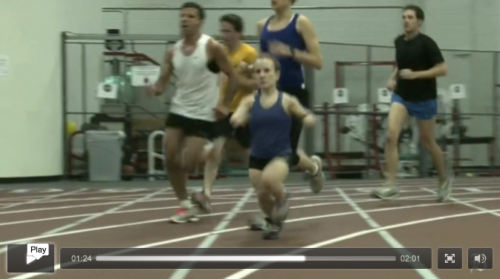
Donald Trump’s reprehensible comments about diversity, equity and inclusion being somehow responsible for Wednesday’s deadly crash between a jet and an Army helicopter included a swipe at people with disabilities; dwarfism was among the conditions he mentioned. Here’s part of his rant (gift link):
[T]he FAA is actively recruiting workers who suffer severe intellectual disabilities, psychiatric problems, and other mental and physical conditions under a diversity and inclusion hiring initiative spelled out on the agency’s website….
The FAA website states they include hearing, vision, missing extremities, partial paralysis, complete paralysis, epilepsy, severe intellectual disability, psychiatric disability and dwarfism all qualified for the position of a controller of airplanes pouring into our country, pouring into a little spot, a little dot on the map, little runway.
As many of you know, we’re part of the dwarfism community. Our adult daughter, Becky, has achondroplasia, which is the most common form of dwarfism. With the proper training, she could, if she wanted, become an air-traffic controller — only maybe not now, I guess. Anyone who isn’t a six-foot-tall straight white man need not apply.
Little People of America, a national organization for people with dwarfism and their families, issued a strong statement about Trump’s evil remarks on Thursday. It’s not likely to get the pickup that it should, so I’m reproducing it here in full.
Little People of America, along with other disability advocacy organizations, are concerned and disgusted by the recent remarks that President Trump and Pete Hegseth made after a deadly mid-air collision yesterday evening — blaming DEI as the reason.
Trump’s statement that those with disabilities — singling out dwarfism amongst the list — are not qualified to perform jobs at the FAA is harmful and demonstrably false. Discriminatory statements like these continue to dismantle the already difficult task of educating the public about disability equity.
Insinuating that individuals with disabilities are less capable and not “the best and brightest” flies in the face of ADA and the protections afforded applicants for jobs they are qualified for.
Merit based employment is not contradictory to DEI opportunities for applicants. A diverse workforce brings a wide range of perspectives that ultimately strengthen institutions and contributes to the mission of public safety. The work of people with disabilities at agencies like the FAA is vital. The suggestion that their inclusion somehow undermines the FAA’s effectiveness is not only inaccurate but dismissive of their value as employees and applicants.
LPA remains, as always, committed to fostering an environment and a community of equality and opportunity for those in the disability community and wholly supports DEI initiatives. As an advocacy organization committed to promoting equality and opportunity for people with disabilities, we call on all public figures to engage in thoughtful, respectful discussions that uplift all individuals, rather than perpetuate division or discrimination. People with disabilities deserve respect, dignity, and equal opportunities.
We encourage our community and the public to continue advocating for the inclusion and recognition of all individuals, particularly those who are often marginalized, and to reject rhetoric that diminishes their worth.
And while we’re at it, we should never forget that Trump mocked a reporter with a disability at one of his 2015 rallies — a shockingly offensive action that should have ended his involvement in national politics. But here we are.




